Physics Lab Exam 1
1/29
Earn XP
Description and Tags
labs 1-5
Name | Mastery | Learn | Test | Matching | Spaced |
|---|
No study sessions yet.
30 Terms
For a part of the lab activity, you turned on the air-supply and pushed the glider to move it on a horizontal air track. You recorded the corresponding data starting from the glider moving away from the sonic sensor to when it returned bouncing off the end of the track. This produced a position-time (x-t) and a velocity-time (v-t) graph. Which statement is correct?
The x-t graph was a line with a positive slope for the away motion and a line with a negative slope for the return motion. But v had a constant positive value before the bounce and a constant negative value after the bounce.
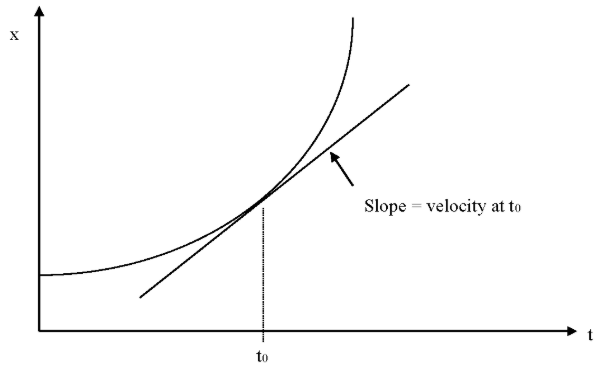

For another part of the experiment, you gave a downhill (positive) constant acceleration by raising the sensor-end of the track by a metal block. Then recorded the data for two bounces. How did the acceleration-time (a-t) data graph look like?
One horizontal line above the time axis (x-axis).
For the part of the experiment with acceleration as in question #2, the x-t graph showed segments of curves, not straight lines. Because
The velocity increased downhill, and the corresponding x-t graph curved upward. Likewise, the velocity decreased uphill, and the respective x-t graph curved downward.
You are given 2 vectors A and B with magnitudes and angles. While adding the vectors in geometric method (tail-to-tip orientation), you take 2 independent approaches: (i) draw A first and then draw B from the tip of A; (ii) draw B first and then draw A from the tip of B. What will you expect for the resultant vectors R?
R will be the same vector in both approaches.
In the algebraic method of vector addition that you learned in the lab, which of the following is NOT true?
If we apply the tangent inverse function to the magnitude of the ratio of y- to x-component of the resultant vector, we always get the angle counter clockwise from +x axis.
Remember that we added 4 force vectors A, B, C to get the resultant force vector R in the lab. Which vector equation in the following did create the balanced force condition (stability that the setup did not fall) on the force table you used in the lab?
A + B + C – R = 0
The projectile motion is a combination of a freefall vertical and a constant horizontal component-motion. Which quantity is, however, same for the 2 components?
Time of flight
In the first part of the projectile lab, you fired the projectile in the horizontal direction with the gun placed on a stool. The projectile landed on the floor. Why did this arrangement help?
The initial and final horizontal velocities were the same, and that was also the firing velocity.
In the final part of the lab, you fired the same gun placed on the stool but aiming at an angle of 20-degree upward from the horizontal. What was true in this case?
Since the projectile first ascended higher to a max height and then turned downward and landed on the floor, it had longer time of flight than that for the horizontal fire in question 2
A 2-Newton force is applied to set in motion a 1-kg crate on a frictionless floor from rest to 2.0 m/s uniformly in one second. How much force will be needed to do exactly the same thing on a 2-kg crate from rest to 1.0 m/s in the same time?
2 N (the same amount of force)
In the experiment conducted in the lab for the fall of a 2 mass system, your measured accelerations were always less than the free fall acceleration. Identify the main reason for this.
The falling acceleration was less than the free fall acceleration because the hanging mass had to also pull to accelerate the track-top mass.
Often times during the experiment the measured acceleration was found to be less than the theoretical value. The most probable reason for this is:
In the theory we assumed zero friction. But in the experiment, even with the air flow, the friction is still exactly not zero.
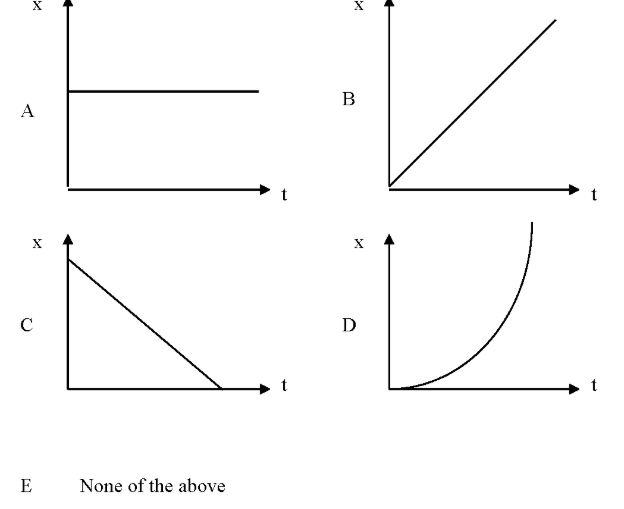
PvsT: In which graph is the object at rest at all times?
A
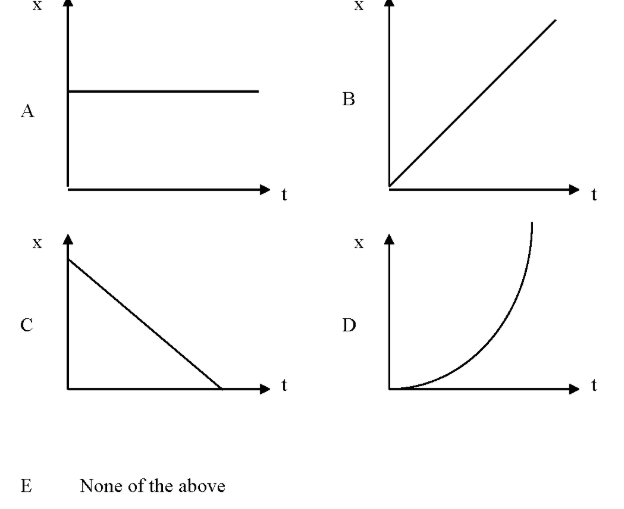
PvsT: In which graph is the object speeding up?
D
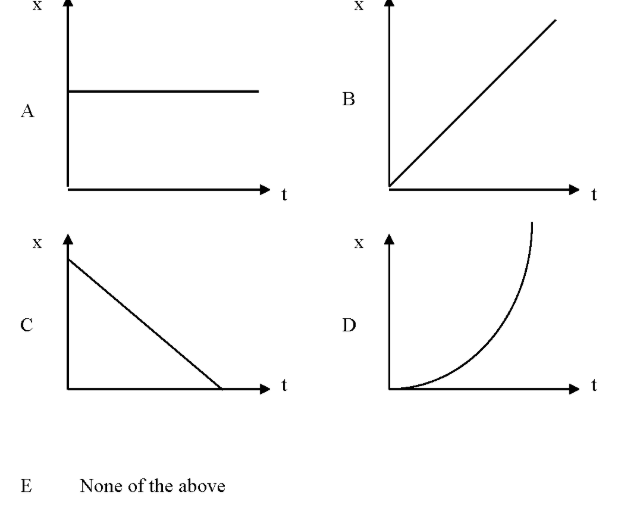
PvsT: In which graph is the object slowing down?
E
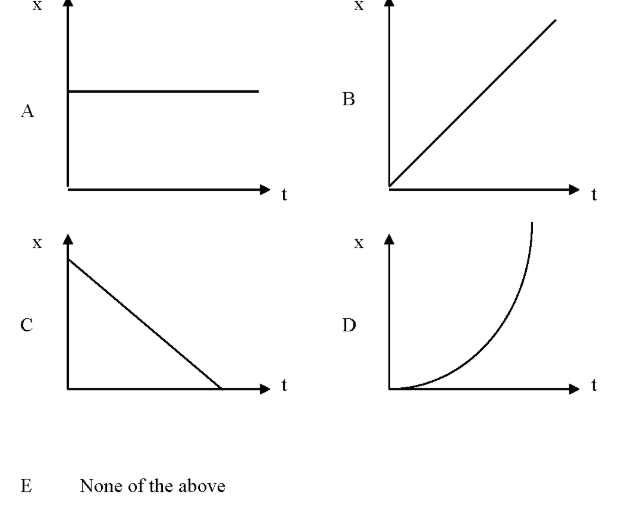
PvsT: In which graph is the velocity not constant?
D
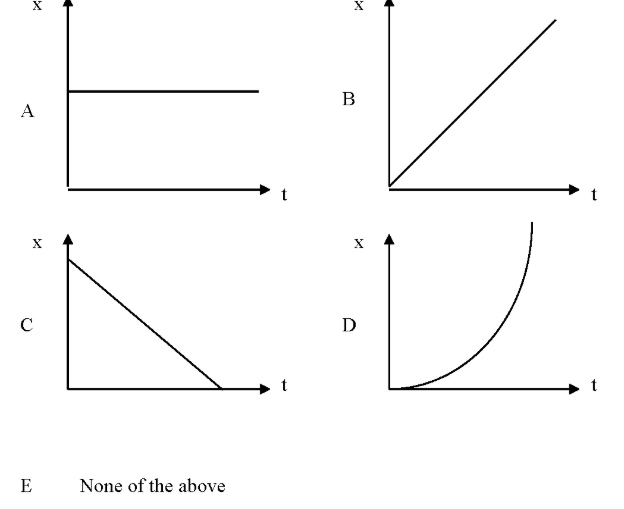
PvsT: In which graph is the velocity positive and constant?
B
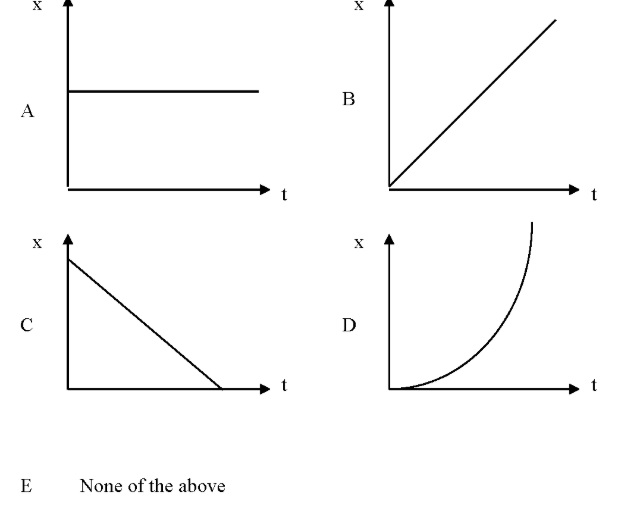
PvsT: In which graph is the velocity negative and constant?
C
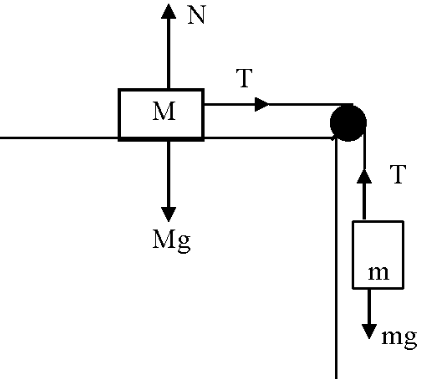
which of the following statements is true about the tension T in the tape connecting the masses:
The tension is smaller than the weight mg
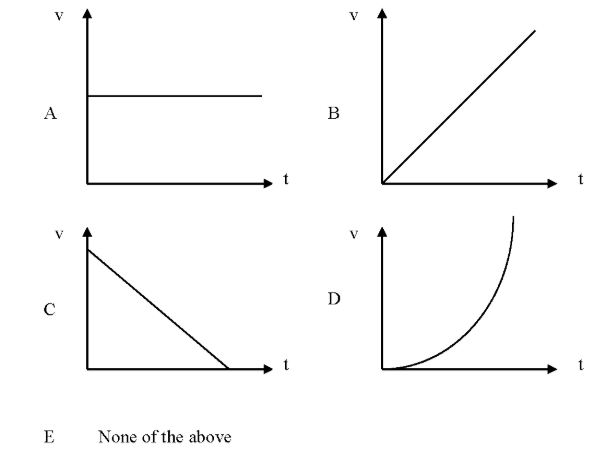
VvsT: In which graph is the object at rest at all times?
E
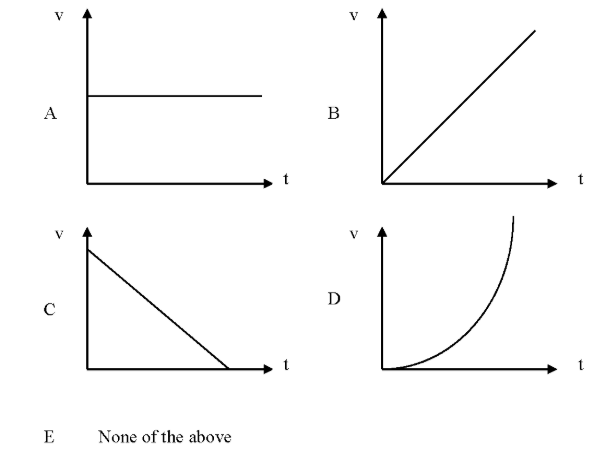
VvsT: In which graphs is the acceleration constant?
A, B, & C
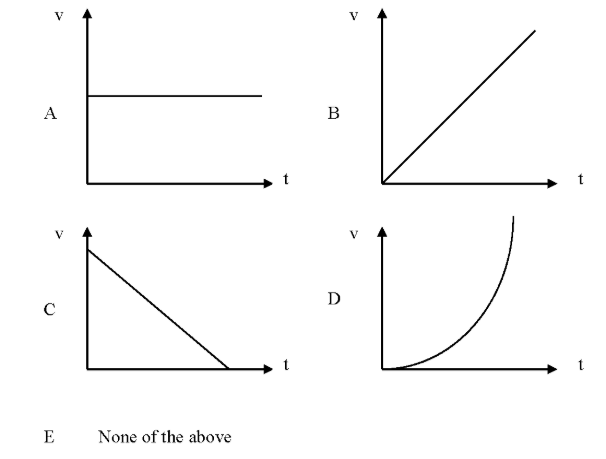
VvsT: In which graph is the acceleration zero?
A
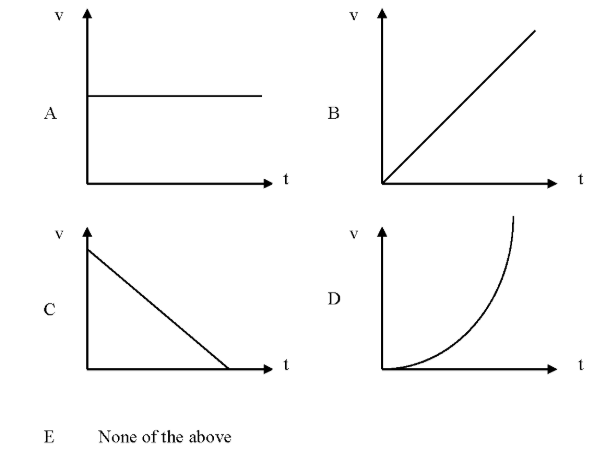
VvsT: In which graphs is the object speeding up?
B & D
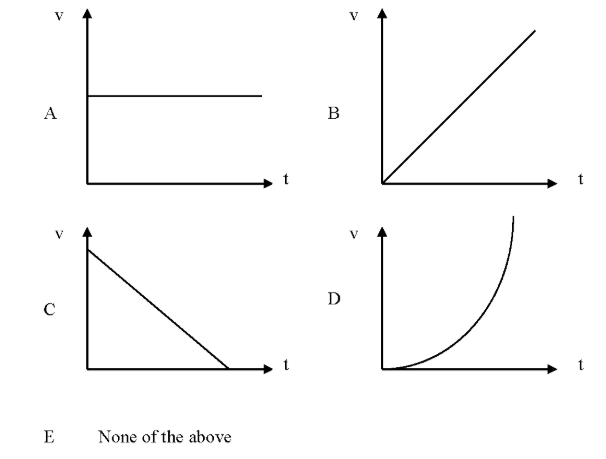
VvsT: In which graph is the object slowing down?
C
If the force acting on a mass is doubled then the acceleration of the mass is
doubled
If the force on a mass stays the same but the mass is doubled then the acceleration of the mass is
half as great
Momentum is conserved in
all collisions
Energy is conserved in
all collisions
Kinetic energy is conserved in
elastic collisions
If the speed of the ball, before collision with the pendulum, is doubled then the height through which the pendulum rises is
quadrupled